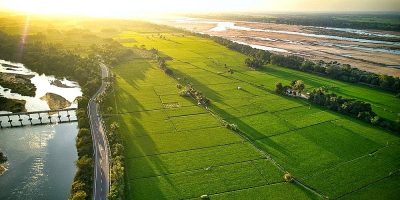
What is food security? The 1996 World Food Summit defined food security as a population having physical and economic access to sufficient safe and nutritious food to meet its dietary needs and food preferences for an active and healthy life at all times.
The United Nations Food and Agriculture Organization (FAO) reported that an estimated 768 million people worldwide will be chronically malnourished by 2021.
This figure represents an increase of more than 100 million people since 2019, owed largely to the COVID-19 pandemic which significantly impacted food systems and livelihoods.
According to the Global Network Against Food Crises (GNAFC), approximately 258 million people in 58 countries and territories faced acute food insecurity at crisis or worse levels in 2022, up from 193 million people in 53 countries and territories in 2021. This indicates that food insecurity has gotten worse since 2019.
Nevertheless, food insecurity remains a major issue in many Asean countries, particularly those with lower incomes.
According to World Food Program, food insecurity affects an estimated 60 million people in the Asean community.
Poverty, lack of access to food, climate change and natural disasters are the region’s primary causes of food insecurity. For example, agricultural production in many Asean rural areas is low due to inadequate infrastructure, limited technological access and insufficient financing.
As a result, food is scarce, and many people in these areas cannot afford enough food to meet their basic nutritional needs.
Although Malaysia is not a low-income Asean country, it is not immune to the growing threat of food insecurity.
Based on the data published by the Department of Statistics Malaysia (DOSM), household food insecurity in Malaysia has increased from 2.8% in 2016 to 5.6% in 2019.
The highest incidence of food insecurity was reported in the bottom 40% of households by income, which experienced an increase from 5.5% in 2016 to 11.2% in 2019.
Additionally, Malaysia scored moderately for hunger in the 2022 Global Hunger Index, with the hunger index rising from 10.9 in 2014 to 12.5 in 2022, indicating that food insecurity has become a growing concern in this country.
While policymakers worldwide have sought to address the growing problem of food insecurity, the World Bank suggested that advances in information and communication technologies (ICT) could significantly alleviate global food insecurity.
According to the World Bank’s report “Digital Dividends in Agriculture: Promises and Challenges” published in 2017, ICT can provide farmers with real-time information on weather, market prices and best farming practices, allowing them to make more informed decisions and improve productivity and efficiency. As a result, food output would increase, and food insecurity would decrease.
In the context of Malaysia, it has been argued that ICT could play a crucial role in mitigating food insecurity in Malaysia through the following ways:
1. Improving agricultural productivity: ICT can help farmers improve agricultural productivity by giving them better access to weather patterns, soil quality information, crop management practices and market prices.
This data can assist farmers in making better decisions about what to plant, when and how to best manage their crops, resulting in higher yields and more efficient resource use.
2. Improving food distribution: ICT can also be used to improve food distribution.
Online marketplaces, for example, can connect farmers directly with consumers, reducing the number of intermediaries in the supply chain and increasing farmers’ revenue.
Mobile apps can also track food movement from farm to table, reducing waste and ensuring food reaches those in need.
3. ICT can also provide nutritional education to Malaysians, allowing them to make more informed dietary decisions.
Mobile apps, for example, can provide nutritional information about various foods, assisting people in making healthier choices.
Online forums and social media platforms, on the other hand, can be used to share information about healthy eating habits and recipes.
Furthermore, apps may be able to advise vulnerable groups on the availability of lower-cost alternative food products.
4. ICT can be used to advance food security policies and initiatives. Social media, for example, can raise public awareness regarding food security issues and gain public support for policy initiatives to reduce food insecurity.
In conclusion, ICT has the potential to reduce Malaysia’s food insecurity by significantly increasing agricultural productivity, improving supply chain management, increasing market access, and promoting better nutrition education.
However, it is important to note that ICT is not a panacea and must be used in conjunction with other measures to address the root causes of food insecurity.

(Goh Lim Thye, Department of Economics, Faculty of Business and Economics, Universiti Malaya.)
ADVERTISEMENT
ADVERTISEMENT







































